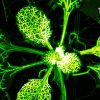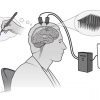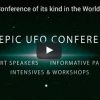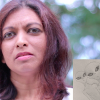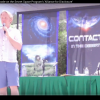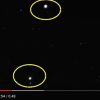Collisions reveal new evidence of ‘anyon’ quasiparticles’ existence0
- From Around the Web, Science & Technology
- April 10, 2020
Some types of anyons may eventually be useful for building better quantum computers

Some types of anyons may eventually be useful for building better quantum computers

BepiColombo needs our planet’s help

New Zealand Prime Minister Jacinda Ardern has declared the Easter Bunny to be an essential worker in her country, stating that the rabbit can go about its mysterious business this Sunday as usual, despite a nationwide lockdown.

Detailed image taken by Event Horizon Telescope of black hole 5bn light years away
Scientists have revisited one of the most iconic images taken with the Hubble Space Telescope, revealing incredible details in infrared light.

Astronomers using the CARMENES spectrograph at Calar Alto Observatory in Spain have discovered a super-Earth exoplanet orbiting an M-dwarf star in the binary system Gliese 338. The newfound planet orbits on the inner edge of the habitable zone and is much more massive than Earth.

When it comes to deciphering our ancient family tree, DNA from fossils is the new gold standard. But after about half a million years, even the best-preserved DNA degrades into illegibility, leaving the story of our early evolution shrouded in mystery. A new study of proteins taken from the tooth of an enigmatic human ancestor reveals their rough place in the family tree—and shows how ancient proteins can push beyond the limits of DNA.

The building blocks of life can, and did, spontaneously assemble under the right conditions. That’s called spontaneous generation, or abiogenesis.

Not too close, but not too far. That’s long been the rule describing how distant a planet should be from its star in order to sustain life. But a new study challenges that adage: A planet can maintain water and other liquids on its surface if it’s heated, not by starlight, but by radioactive decay, researchers calculate. That opens up the possibility for many planets—even free-floating worlds untethered to stars—to host life, they speculate.
